Pros and Cons of DIY Teeth Whitening
-
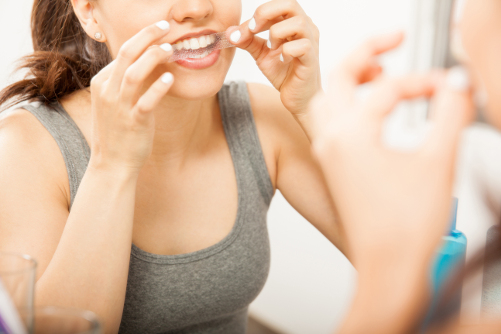
Teeth whitening is the most popular cosmetic dentistry treatment primarily because it offers a quick, non-invasive and relatively inexpensive way to drastically improve smile aesthetics. People seeking a whitening solution have two primary options to choose from: In-office, professionally managed teeth whitening, or a do-it-yourself at-home solution.
There are a variety of in-office teeth whitening solutions to choose from, and patients are typically very satisfied with the results they achieve. However, that’s not to say that in-office teeth whitening is necessarily better than DIY whitening. In fact, there are those who might suggest that at-home teeth whitening — when done correctly — can be even more effective than the professionally managed alternative.
In order to better understand whether an in-office or at-home whitening solutionis right for you, we’ve broken down some of the notable pros and cons of DIY teeth whitening.
-
1. Results
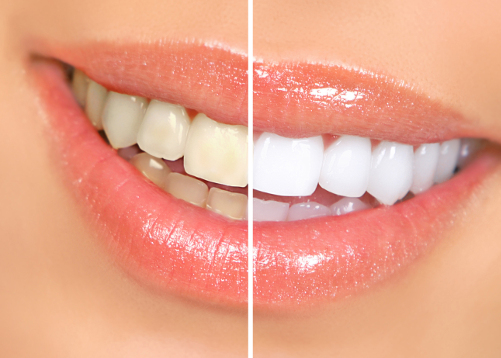
At-home teeth whitening cannot compare with in-office teeth whitening when it comes to the speed of results. In addition to using higher concentration bleaching agents to provide for a wider range of shade change, many cosmetic dentists have technology at their disposal that can help activate and enhance the process, such as high-intensity lighting systems. The quality of results achieved from in-office whitening can also be difficult to compete with, especially for those looking for a carefully controlled shade change. Prior to treatment, your dentist will perform a prophylactic cleaning to clear away plaque and debris, helping to improve your results.
That said, it is possible to achieve superior results through at-home products under the right circumstances. Although over-the-counter whiteners like strips and trays cannot compare with in-office solutions, dentist-dispensed whitening products can yield fantastic results. In fact, many believe that the best bleaching results can be achieved from such dentist-dispensed whiteners used over extended periods of time with custom-fitted whitening trays designed to keep the bleach in perfect contact with the teeth and prevent saliva from getting in.
Dentist-dispensed take-home whiteners are so good that cosmetic dentists typically supplement in-office whitening with a take-home product designed to help maintain results.
-
2. Cost
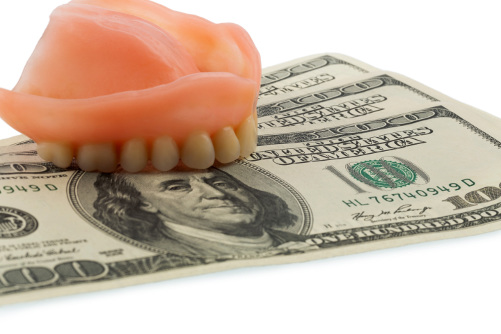
If you’re looking for an economical solution to teeth whitening, then a DIY solution is your best bet. Over-the-counter whiteners like toothpastes, mouth rinses, strips and trays can range from $4 to $100. Stronger and more effective dentist-dispensed solutions can be considerably more expensive (as high as $400, or even more).
By contrast, in-office teeth whitening costs about $650 on average, with results lasting several months (or longer if properly maintained).
-
3. Safety
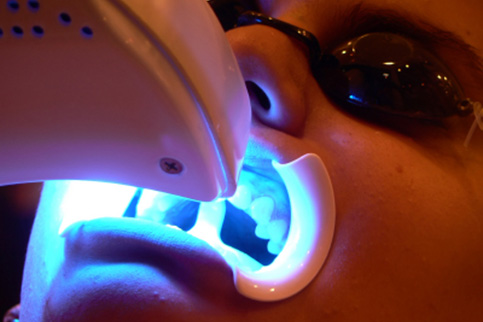
It goes without saying that whitening performed at the hands of an experienced cosmetic dentist is far safer than any sort of DIY option. Keep in mind that whitening involves using a hydrogen peroxide-based bleaching agent that can cause significant pain and discomfort if not applied appropriately.
Prior to administering treatment, your dentist will perform a thorough oral health evaluation to ensure that your teeth and gums are healthy enough for bleaching. Common dental health issues like gingivitis, gum disease and tooth decay must be treated before bleaching can be considered. Bleaching performed on an unhealthy mouth can cause extreme pain and poor results.
-
4. Treatment Speed
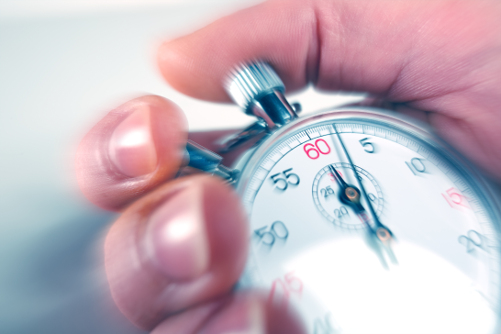
In-office teeth whitening is a very quick treatment with immediate results. After your teeth have been cleaned and prepped for treatment, a bleaching gel is applied to the “esthetic zone” of the teeth (areas visible when you smile) and left in place for approximately 15 – 30 minutes. The gel is then washed off and the process is repeated one or more times. Total treatment time varies, but can be performed in less than 45 minutes.
Treatment time for DIY whiteners varies depending on what sort of whitener you are using. Dentist-dispensed take-home whitening trays typically require you to wear them for 30 to 60 minutes a day, over a period of five to 10 days. Although quality results can be achieved through at-home bleaching products, the treatment time is significantly longer than a professionally managed option.
-
5. Convenience

When it comes to convenience, DIY whitening is the clear winner. You can work treatment around your schedule rather than relying on the appointment availability of your dentist. Strips can be worn while you’re taking care of other things, and on-the-go whitening pens afford you the flexibility to maintain or touch up your treatment from anywhere.
If you want a dentist-dispensed whitener, you will still need to schedule an appointment in order to have your teeth checked and custom trays fitted. But the treatment itself is still a more convenient option.
-
6. What’s Most Important to You?

DIY teeth whitening clearly has a number of advantages over the in-office solutions, but there are some drawbacks. The only way to determine which option is right for you is to weigh what is most important to you. Are you looking for a flexible whitening solution that is relatively low cost? Or are you looking for a quick treatment before an event that you want to make sure is perfect? Once you identify what is most important to you, the decision becomes a lot simpler.









